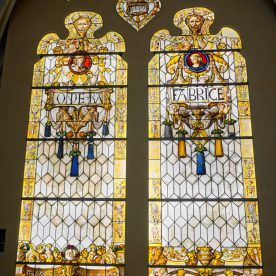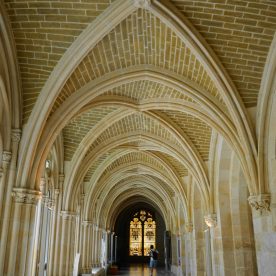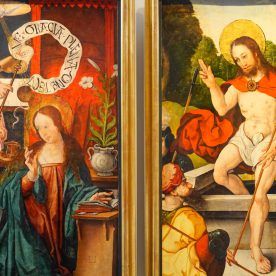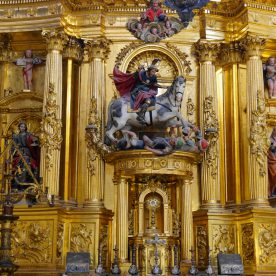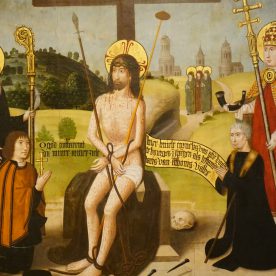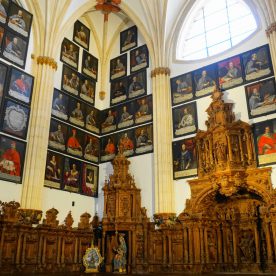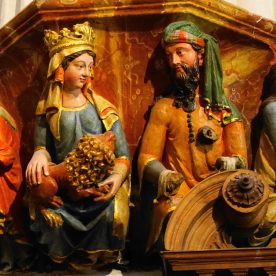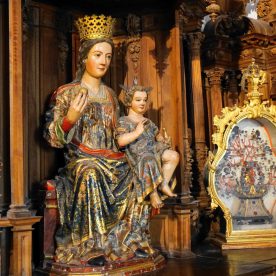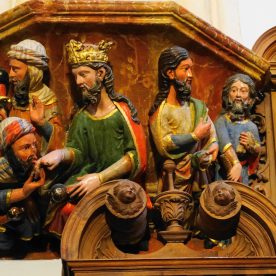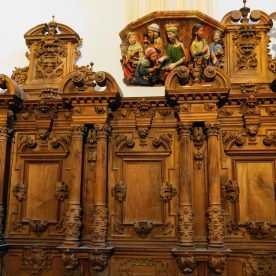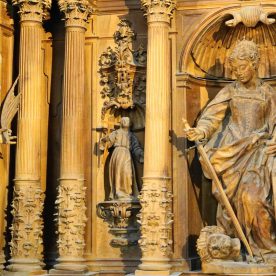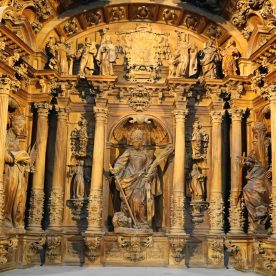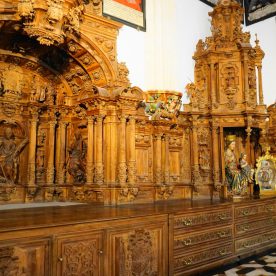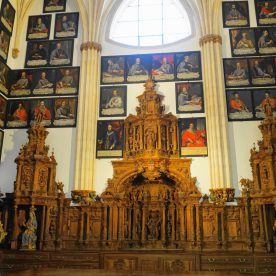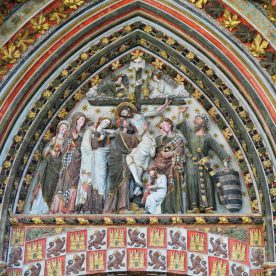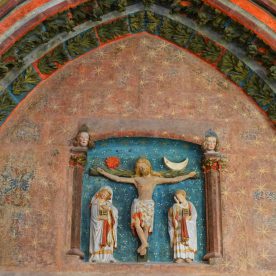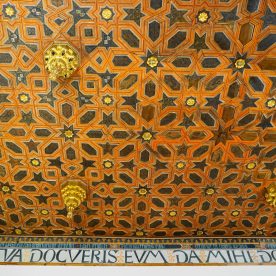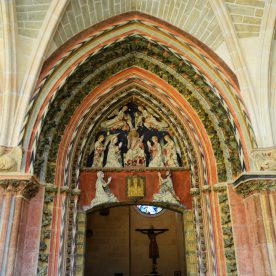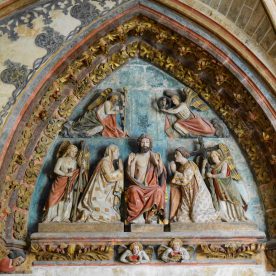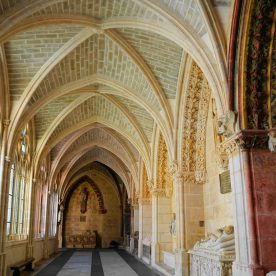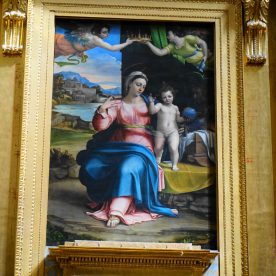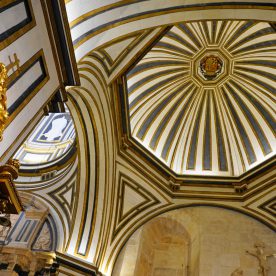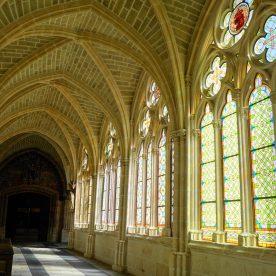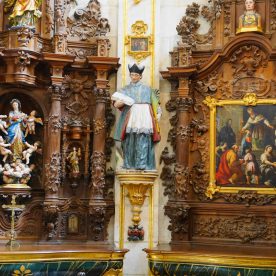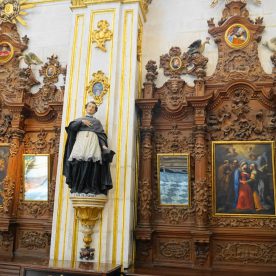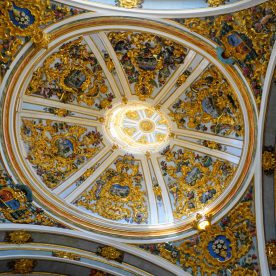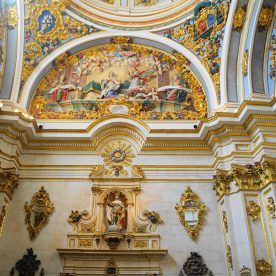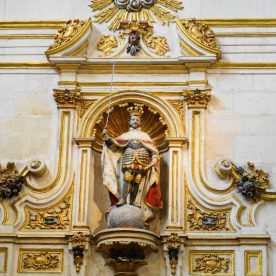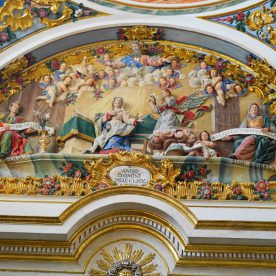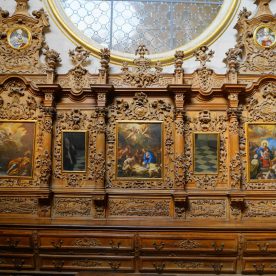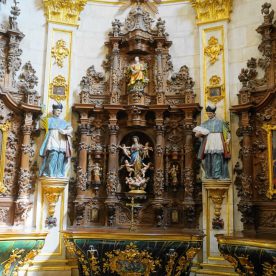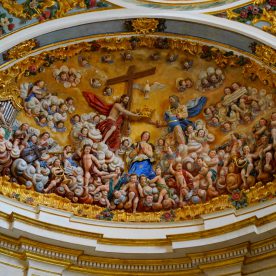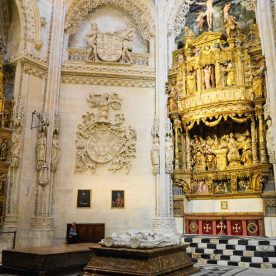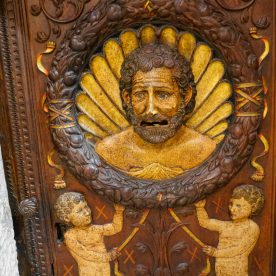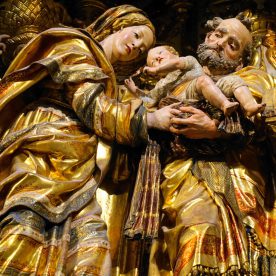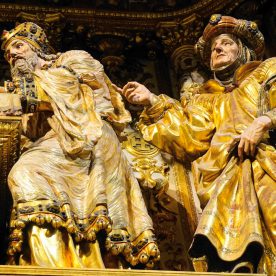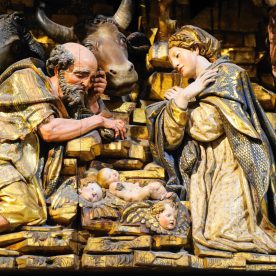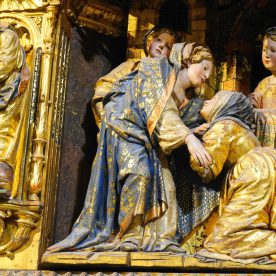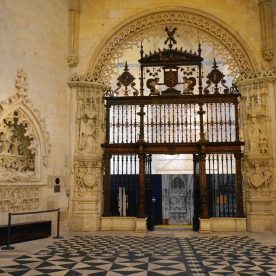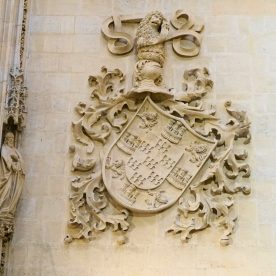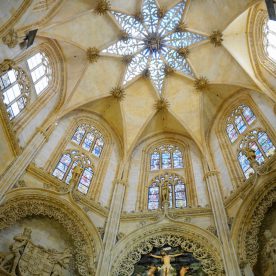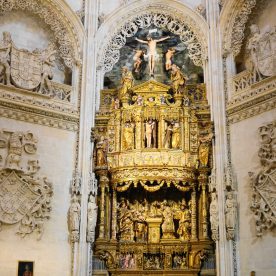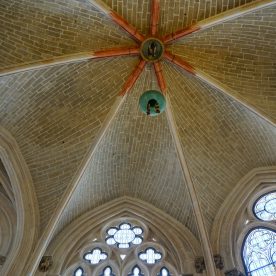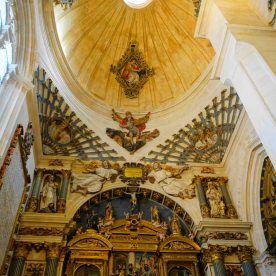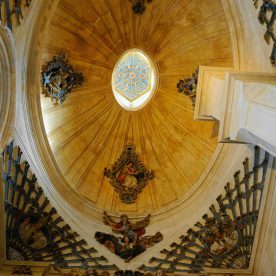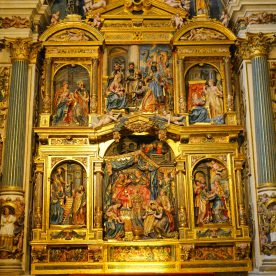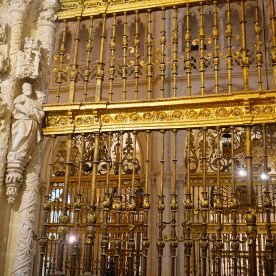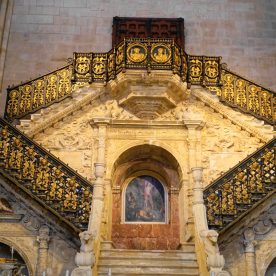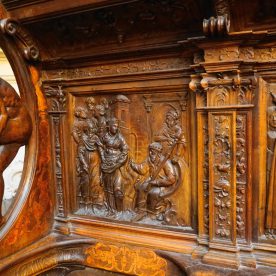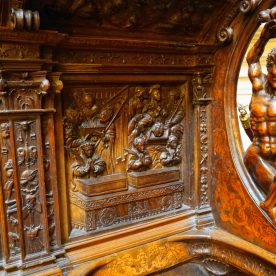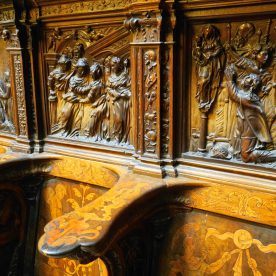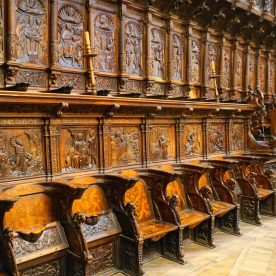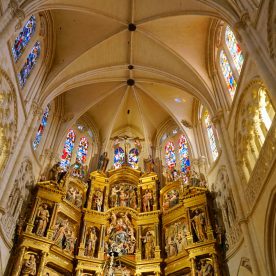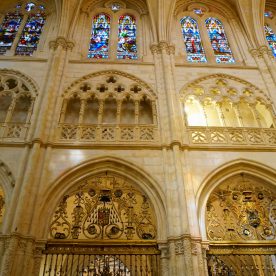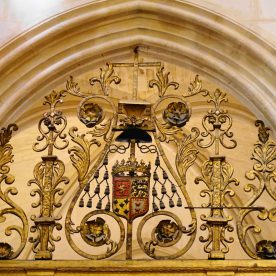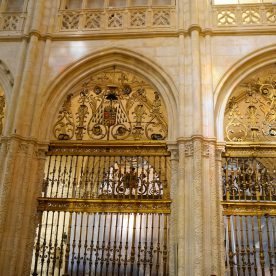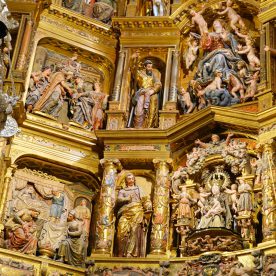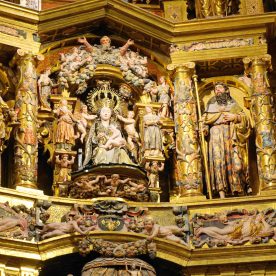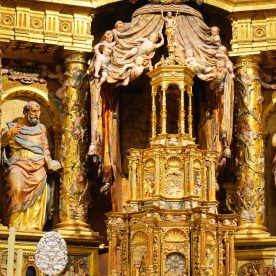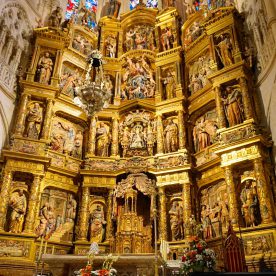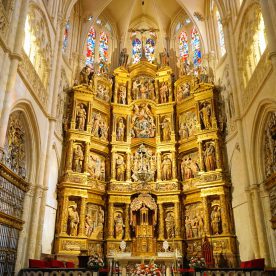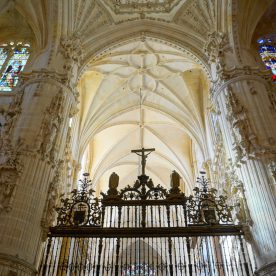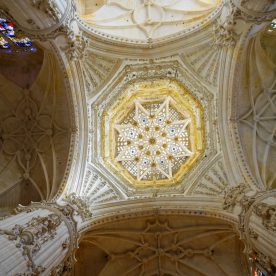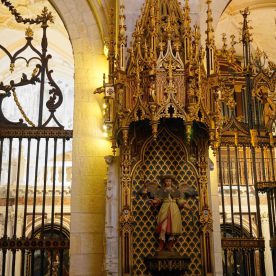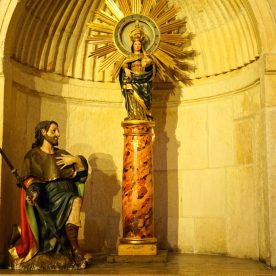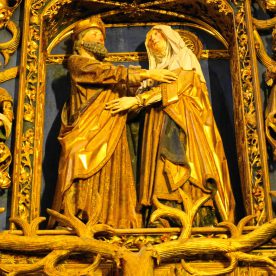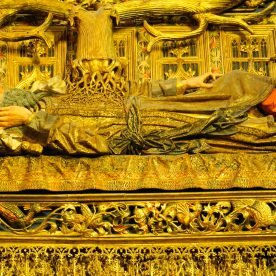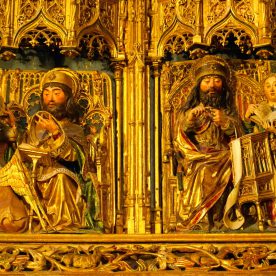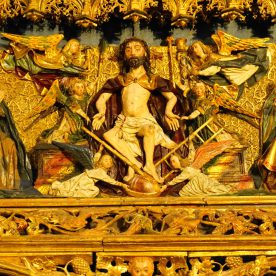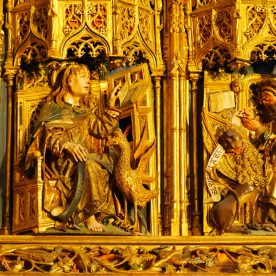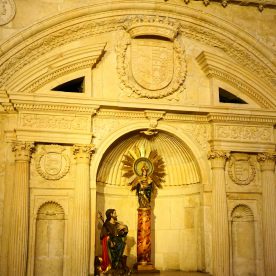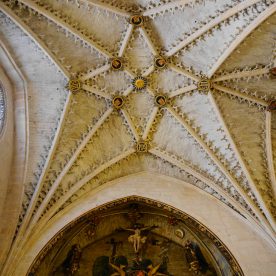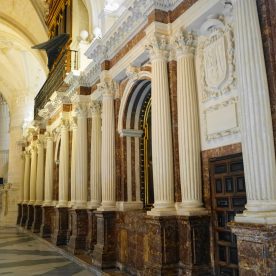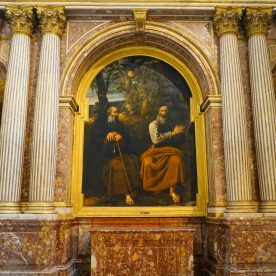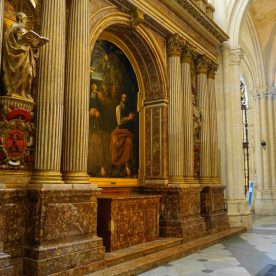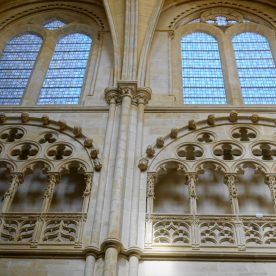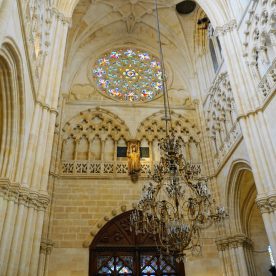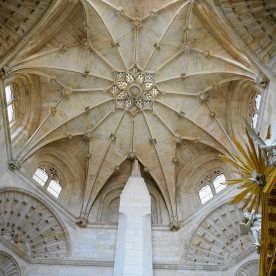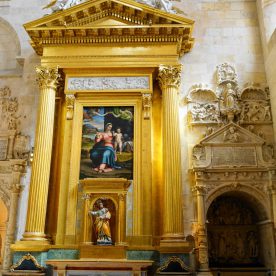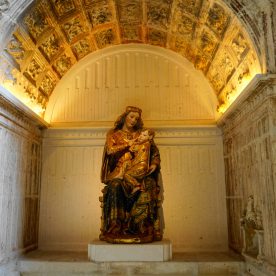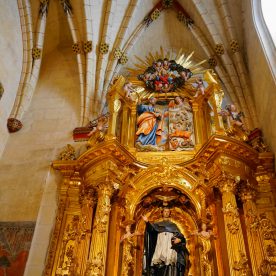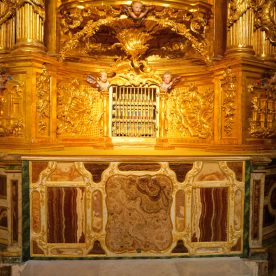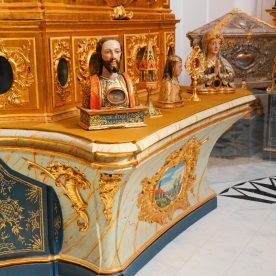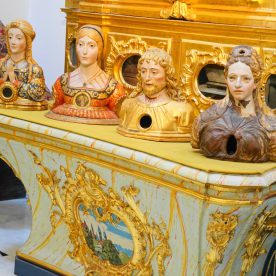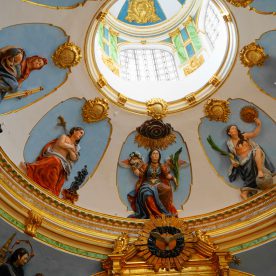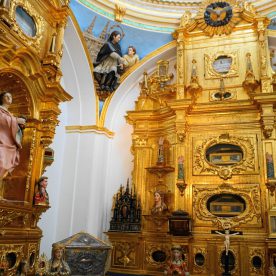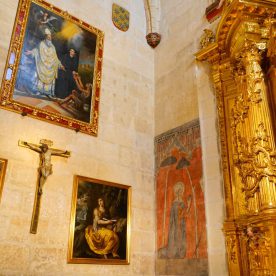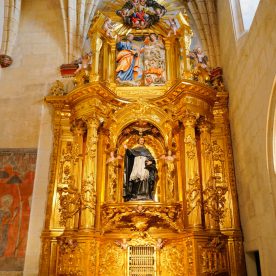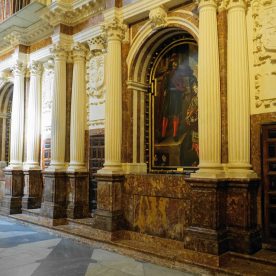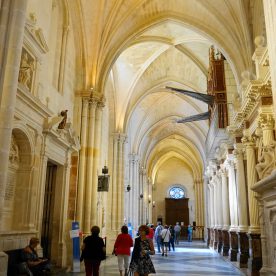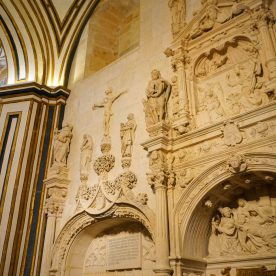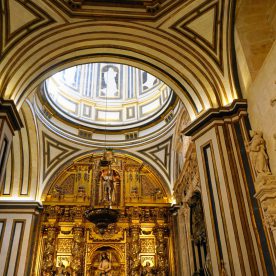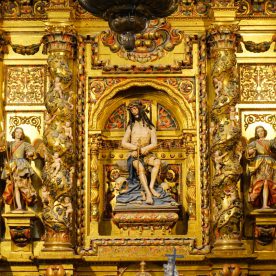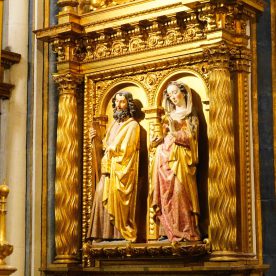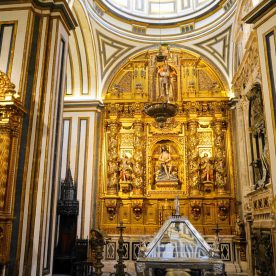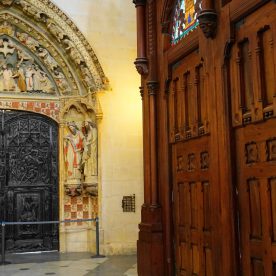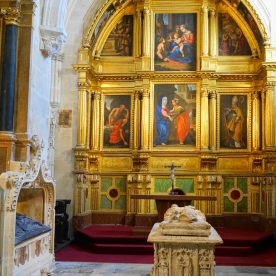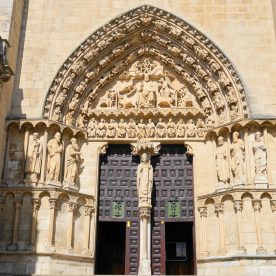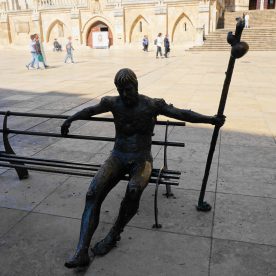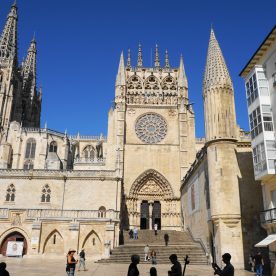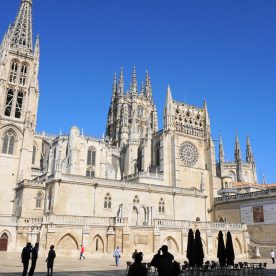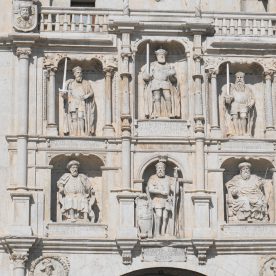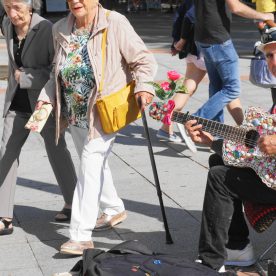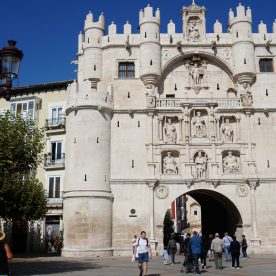The Cathedral of Saint Mary of Burgos (Spanish: Santa Iglesia Basílica Catedral Metropolitana de Santa María de Burgos) is a Catholic church dedicated to the Virgin Mary located in the historical center of the Spanish city of Burgos. Its official name is Santa Iglesia Catedral Basílica Metropolitana de Santa María de Burgos.
Its construction began in 1221, in the style of French Gothic architecture and is based on a Latin Cross. After a hiatus of almost 200 years, it went through major embellishements of great splendor in the 15th and 16th centuries: the spires of the main facade, the Chapel of the Constable and dome of the transept. These are elements of the flamboyant Gothic which gives the cathedral its unmistakable profile. The last works of importance (the Sacristy or the Chapel of Saint Thecla) were performed in the 18th century, during which the Gothic portals of the main facade were also modified. The style of the cathedral is the Gothic, although it has several decorative Renaissance and Baroque elements as well. The construction and renovations were made with limestone extracted from the quarries of the nearby town of Hontoria de la Cantera.
Many works of extraordinary artists are preserved in the cathedral, bearing testimony to the creative genius of architects and sculptors of the Colonia family (Juan, Simón and Francisco), the architect Juan de Vallejo, sculptors Gil de Siloé, Felipe Bigarny, Rodrigo de la Haya, Martín de la Haya, Juan de Ancheta and Juan Pascual de Mena, the sculptor and architect Diego de Siloé, the fencer Cristóbal de Andino, the glazier Arnao de Flandes and the painters Alonso de Sedano, Mateo Cerezo, Sebastiano del Piombo or Juan Ricci, among others.
The design of the main facade is related to the purest French Gothic style such as found in the contemporary great cathedrals of Paris and Reims, while the interior elevation refers to Bourges Cathedral. The facade consists of three stories topped by two lateral square bell towers. The spires, showing Germanic influence, were added in the 15th century by Juan de Colonia. The portals of Sarmental and la Coronería were constructed in 13th century Gothic style, while the portal de la Pellejería shows 16th century Plateresques-Renaissance influences.
The cathedral was declared a World Heritage Site by UNESCO on October 31, 1984. It is the only Spanish cathedral that has this distinction independently, without being joined to the historic center of a city (as in Salamanca, Santiago de Compostela, Ávila, Córdoba, Toledo, Alcalá de Henares or Cuenca) or in union with other buildings, as in Seville. It is similar in design to Brussels Cathedral.
Burgos became a bishopric in 1075 by the king Alfonso VI of León and Castile “the Brave” on authority of Pope Gregory VII, giving it a canonical continuation with the episcopal tradition of the diocese of Oca, whose prelate was in 589 already recorded as a signatory to the Third Council of Toledo during the reign of the Visigoths.
The monarch dedicated the construction of a cathedral to the Virgin Mary . Its design is not known, but it is supposedly Romanesque and of the type of contemporary works (of the Abbey of Santo Domingo de Silos, of the Monastery of San Pedro de Arlanza of San Martín de Tours de Frómista or the Cathedral of Jaca). There is documentary evidence that the monarch donated the outdoor area of the royal palace that had belonged to his father Ferdinand I of León and a small church dedicated to Saint Mary that was under construction.
In 1096 the construction on this church was finished. But the church soon became too small for the needs of a city that was the symbolic capital of the kingdom, a powerful bishopric (the cathedral chapter had more than thirty canons already before 1200) and an increasingly dynamic business center. The decision to build a new cathedral was finally made in the 13th century. As was common at the time, the Romanesque building was destroyed (of which now only some sculptural elements remain), presumably during the second construction campaign of the new cathedral in the 1240s and the 1250s. And on this site, expanded through the demolition of neighboring houses, with donations by the Bishop Marino, rose a new Gothic cathedral.
